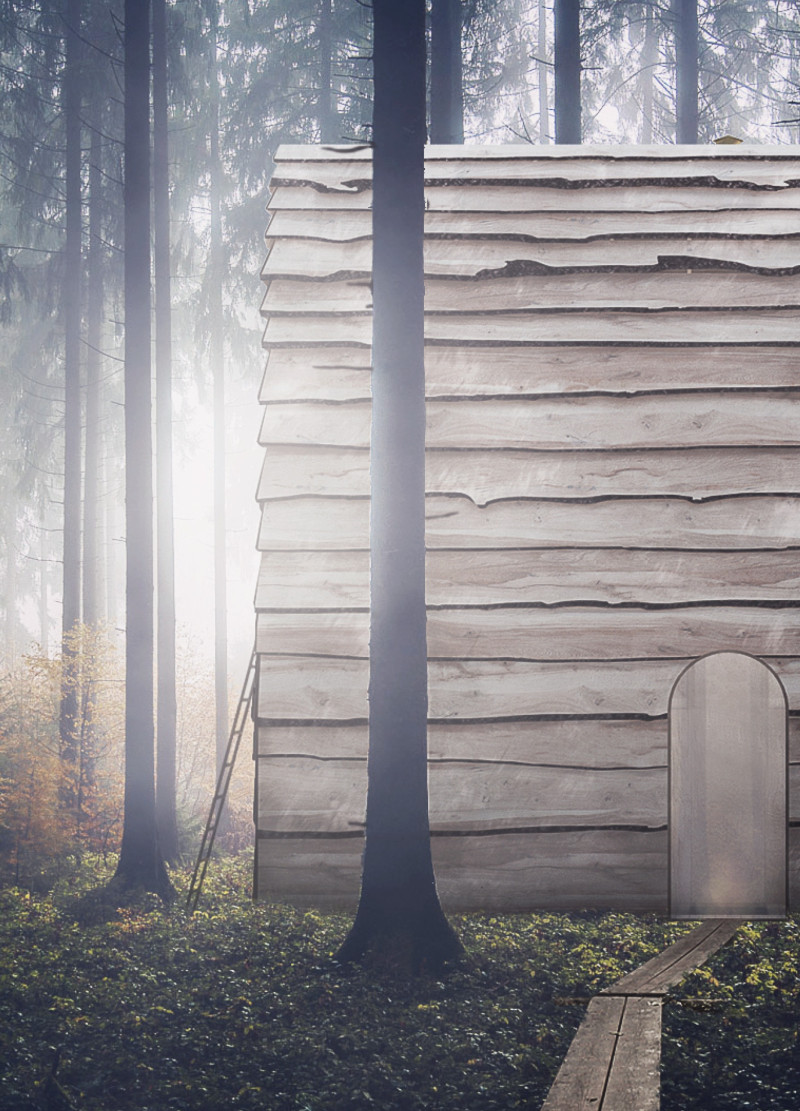5 key facts about this project
Located at the edge of the Amata forest in Latvia, the shelter functions as a meditation space designed to enhance mindfulness and connection to the natural world. Its design carefully considers the landscape and incorporates elements that reflect local architectural traditions. The overall goal is to create a tranquil environment that encourages introspection and fosters a deeper relationship with nature.
Conceptual Framework
The design embodies a philosophy of respect for the environment, emphasizing the interplay between the shelter and its natural surroundings. By placing the structure among the trees, the project minimizes its impact on the ecosystem while promoting a harmonious interaction with the existing landscape. This approach encourages visitors to connect with the beauty of the forest, enhancing their experience of nature.
Spatial Organization
The layout of the shelter is carefully arranged to promote contemplation. Different areas are created for both open and sheltered experiences, offering space for personal reflection while ensuring a sense of security. This thoughtful organization fosters opportunities for visitors to explore their surroundings, all within a comforting and protective atmosphere.
Materiality
The choice of materials is integral to the project’s identity. Locally sourced pine wood and rough-sawn spruce planks highlight a commitment to sustainability and align with traditional building practices in Latvia. These materials allow the structure to blend into the landscape naturally and provide a tactile quality that invites interaction, reinforcing the connection between the shelter and the forest.
Architectural Form
The form of the shelter balances moments of protection with a sense of openness. It acts as a refuge against the elements while still allowing users to experience the outdoors. Over time, the building is expected to age gracefully, merging into its environment and becoming a subtle part of the landscape.
The wooden facade will change with the seasons, reflecting the colors and textures of the forest, creating a visual dialogue between the shelter and its surroundings.


























